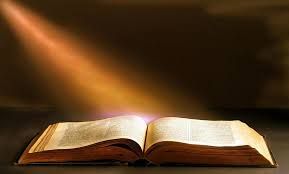
16th Sunday 2024 year B
The early ancestors of the Israelites were nomadic and moved with their flocks from one to the next pasture, and even when they first settled in what is sometimes called the Promised Land, sheep-keeping continued as well as farming various crops and trees. As their society became more structured there was still shepherding, though it became the task of the youngest son(s) or even of servants. Most famous of these was the young lad David, who not only defeated with his sling the enemy Goliath (a giant of a warrior), but also became a highly honoured and well remembered king. Leaders of people and kings were called shepherds and their task was to care for their people with all the dedication that a shepherd has to have in pastoring his sheep; indeed this analogy was also used to refer to God and his relationship to the people. Even today we use the word pastor to refer to a religious leader – the bishops crosier is based on the crook that was used to keep a sheep from fleeing. The prophet Jeremiah uses this imagery in the first reading today ( chapter 23 verses 1-6 ). This is at the time when some of the leaders of the people where being taken into exile by the Babylonian empire in Mesopotamia. It was a sad period in the history of the Jews. The cause is both the decline in morals and religious involvement that the people had, but also the corrupt and inadequate leadership in matters of policies and religious ceremonies. It is these shepherds of the people who are berated by the prophet Jeremiah. But he expects that the things will be better in the future, and interprets this basic hope into the expectation of the return of all to their original homeland where there will be prosperity. There is added also a messianic expectation of an ideal leader. All this is suitably followed with the responsorial psalm: the Lord is my shepherd (psalm 23).
Even centuries before the time of Christ there were splits between Israelite Jews and other Jews living elsewhere; but the future healing of this rift was hoped for in the book of Isaiah (57:19) where it says, “Peace, peace, to the far and the near, says the Lord; and I will heal them.” Paul in Ephesians ( 2:13-18 ), our second reading, may have had this passage in mind. At the time this was written (maybe thirty years after Christ), the passage seems to celebrate the potential unity and peace between Jewish Christians and Gentile ones brought about through the sacrificial life of Christ. This is encapsulated in the words “by the blood of Christ;” this has a different connotation when we realise that ‘blood’ was seen as the life of a person rather than the actual liquid in the sacrifice of animals used in some religions and even in the Temple in Jerusalem until its destruction about 70 AD. Our reading seems to us, perhaps, a bit over harsh when it goes so far as to say that the Jewish laws are no longer relevant because in Christ there is “a new humanity” in which people can exist and live. But it is this notion of the new humanity that is behind the ecumenical thinking in our days; Catholics are recommended to be more irenic in the proclamations of Vatican II approved by about 2000 Catholic bishops just over 50 years ago.
The gospel comes from Mark 6:30-34. The disciples have been busy touring the villages commissioned by Jesus in last week’s gospel reading, and now they need some time for rest and reflection after what seems to have been remarkable success. But when the enthused followers are crowding around them Jesus takes the twelve away by boat to a lovely place for a well-earned rest. But the enthused crowd find them in their retreat and Jesus feels the responsibility to teach them as the shepherd looks after his sheep. Religious ‘shepherds’ have such and many responsibilities. The image of sheep needing shepherding is the reason for this choice of reading to link with the other texts read today.
Jeff's jottings: Christian Groups
Jeff Bagnall was a lecturer for many years at Craiglockhart College teaching RE to many future Catholic Primary teachers.